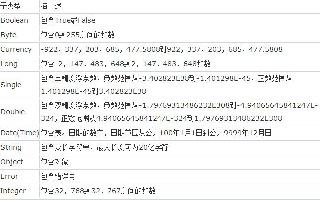Spring AOP注解案例及基本原理詳解
切面:Aspect
切面=切入點+通知。在老的spring版本中通常用xml配置,現在通常是一個類帶上@Aspect注解。切面負責將 橫切邏輯(通知) 編織 到指定的連接點中。
目標對象:Target
將要被增強的對象。
連接點:JoinPoint
可以被攔截到的程序執行點,在spring中就是類中的方法。
切入點:PointCut
需要執行攔截的方法,也就是具體實施了橫切邏輯的方法。切入點的規則在spring中通過AspectJ pointcut expression language來描述。
切入點與連接點的區別:連接點是所有可以被'切'的點;切入點是真正要切的點。
通知:Advice
針對切入點的橫切邏輯,包含“around”、“before”和“after”等不同類型的通知。
通知的作用點如其命名:
before:在切入點之前執行 after:在切入點之后執行 around:在切入點攔截方法,自定義前后,更靈活還有一些異常處理的通知,這里不一一舉例
織入:Weaving
將切面和目標對象連接起來,創建代理對象的過程。spring中用的是動態代理。假如目標對象有接口,使用jdk動態代理;否則使用cglib動態代理。
說了這么多概念,看看代碼實現可能會使讀者理解的更深刻一些,這里簡單寫一個通過注解增強方法的AOP-Demo。首先是切面類:
package com.example.demo.aop;import org.aspectj.lang.JoinPoint;import org.aspectj.lang.ProceedingJoinPoint;import org.aspectj.lang.annotation.*;import org.springframework.stereotype.Component;/** * @author Fcb * @date 2020/6/20 * @description 切面類=切入點+通知 */@Aspect@Componentpublic class LogAspect { //這個方法定義了切入點 @Pointcut('@annotation(com.example.demo.aop.anno.MyLog)') public void pointCut() {} //這個方法定義了具體的通知 @After('pointCut()') public void recordRequestParam(JoinPoint joinPoint) { for (Object s : joinPoint.getArgs()) { //打印所有參數,實際中就是記錄日志了 System.out.println('after advice : ' + s); } } //這個方法定義了具體的通知 @Before('pointCut()') public void startRecord(JoinPoint joinPoint) { for (Object s : joinPoint.getArgs()) { //打印所有參數 System.out.println('before advice : ' + s); } } //這個方法定義了具體的通知 @Around('pointCut()') public Object aroundRecord(ProceedingJoinPoint pjp) throws Throwable { for (Object s : pjp.getArgs()) { //打印所有參數 System.out.println('around advice : ' + s); } return pjp.proceed(); }}
注解:
package com.example.demo.aop.anno;import java.lang.annotation.*;/** * @author Fcb * @date 2020/6/20 * @description */@Documented@Retention(RetentionPolicy.RUNTIME)@Target({ElementType.METHOD, ElementType.TYPE})public @interface MyLog {}
目標類:
package com.example.demo.aop.target;import com.example.demo.aop.anno.MyLog;import org.springframework.web.bind.annotation.RequestMapping;import org.springframework.web.bind.annotation.RequestParam;import org.springframework.web.bind.annotation.RestController;/** * @author Fcb * @date 2020/6/20 * @description */@RestControllerpublic class MockController { @RequestMapping('/hello') @MyLog public String helloAop(@RequestParam String key) { System.out.println('do something...'); return 'hello world'; }}
最后是測試類:
package com.example.demo.aop.target;import org.junit.jupiter.api.Test;import org.springframework.beans.factory.annotation.Autowired;import org.springframework.boot.test.context.SpringBootTest;/** * @author Fcb * @date 2020/6/20 * @description */@SpringBootTestclass MockControllerTest { @Autowired MockController mockController; @Test void helloAop() { mockController.helloAop('aop'); }}
控制臺結果:
around advice : aopbefore advice : aopdo something...after advice : aop
以上就是本文的全部內容,希望對大家的學習有所幫助,也希望大家多多支持好吧啦網。
相關文章:

 網公網安備
網公網安備